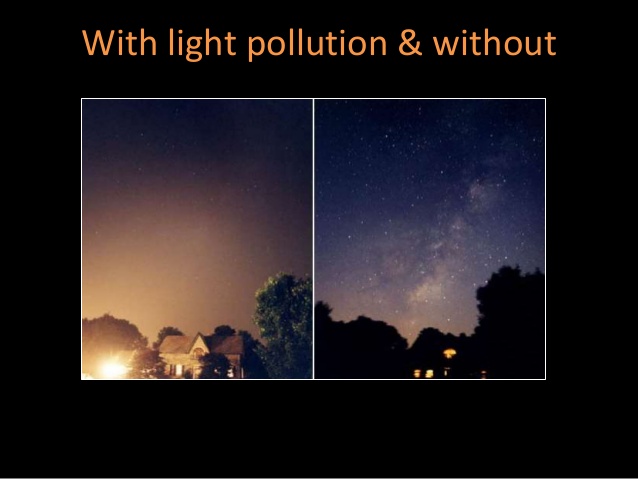Why in news?
Earth’s artificially lit outdoor surface at night grew by about 2%, resulting in increasing light pollution.
What is light pollution?
- Light pollution, also known as photo pollution, is the presence of anthropogenic light in the night environment.
- It is exacerbated by excessive, misdirected or obtrusive uses of light, but even carefully used light fundamentally alters natural conditions.
- As a major side-effect of urbanization, it is blamed for compromising health, disrupting ecosystems and spoiling aesthetic environments.

What are the consequences of Light pollution?
- Light pollution has ecological consequences, with natural light cycles disrupted by artificial light introduced into the night time environment.
- Increased sky glow can affect human sleep
- In addition to threatening 30 percent of vertebrates that are nocturnal and over 60 percent of invertebrates that are nocturnal, artificial light also affects plants and microorganisms.
- It threatens biodiversity through changed night habits, such as reproduction or migration patterns, of many different species: insects, amphibians, fish, birds, bats and other animals.”
What does recent data imply?
- Every year earth is getting brighter than earlier years, it underscores the concerns about the ecological effects of light pollution on people and animals.
- The rate of growth observed in developing countries was much faster than in already brightly lit rich countries.
- With few exceptions, growth in night time light was observed throughout South America, Africa and Asia.
- Light remained stable in only a few countries, although the researchers said the satellite sensor’s blindness to some LED light may mask an actual increase.
- Eg. Australia’s lit area decreased due to wildfires. Night time light declined in War-hit Syrian and Yemen.
What are the reasons of increasing light pollution?
- US National Oceanic and Atmospheric Administration weather satellite data may understate the situation because its sensor cannot detect some of the LED lighting that is becoming more widespread, specifically blue light.
- Experts had hoped the growing use of highly efficient LED lighting might lessen energy usage worldwide.
- The new findings indicate use of artificial lighting instead is growing, increasing energy demand.
- City transitions of its street lighting from sodium lamps to LED, indicates that savings in energy are being offset by either new or brighter lights in other places.
Source: Live mint
